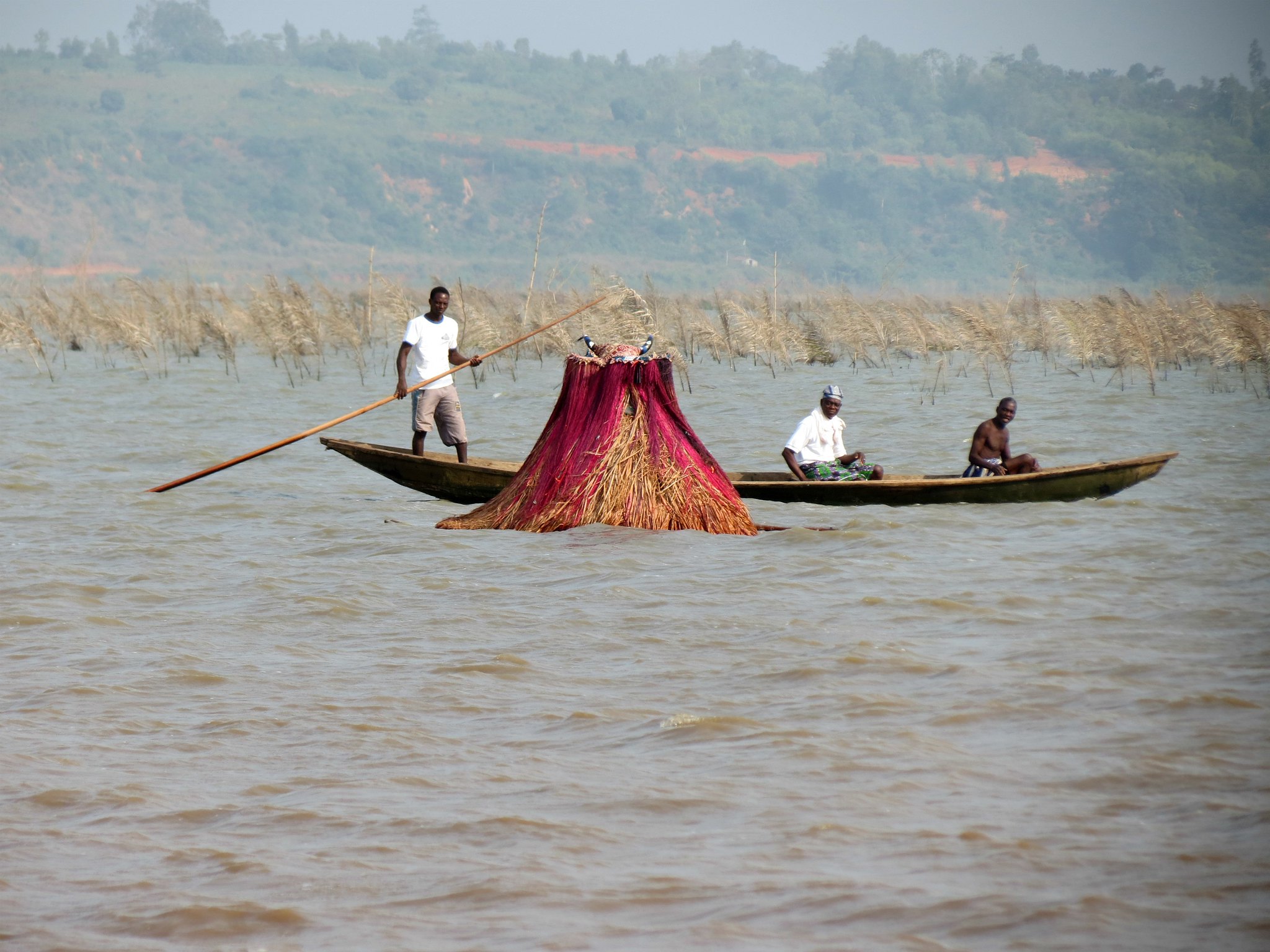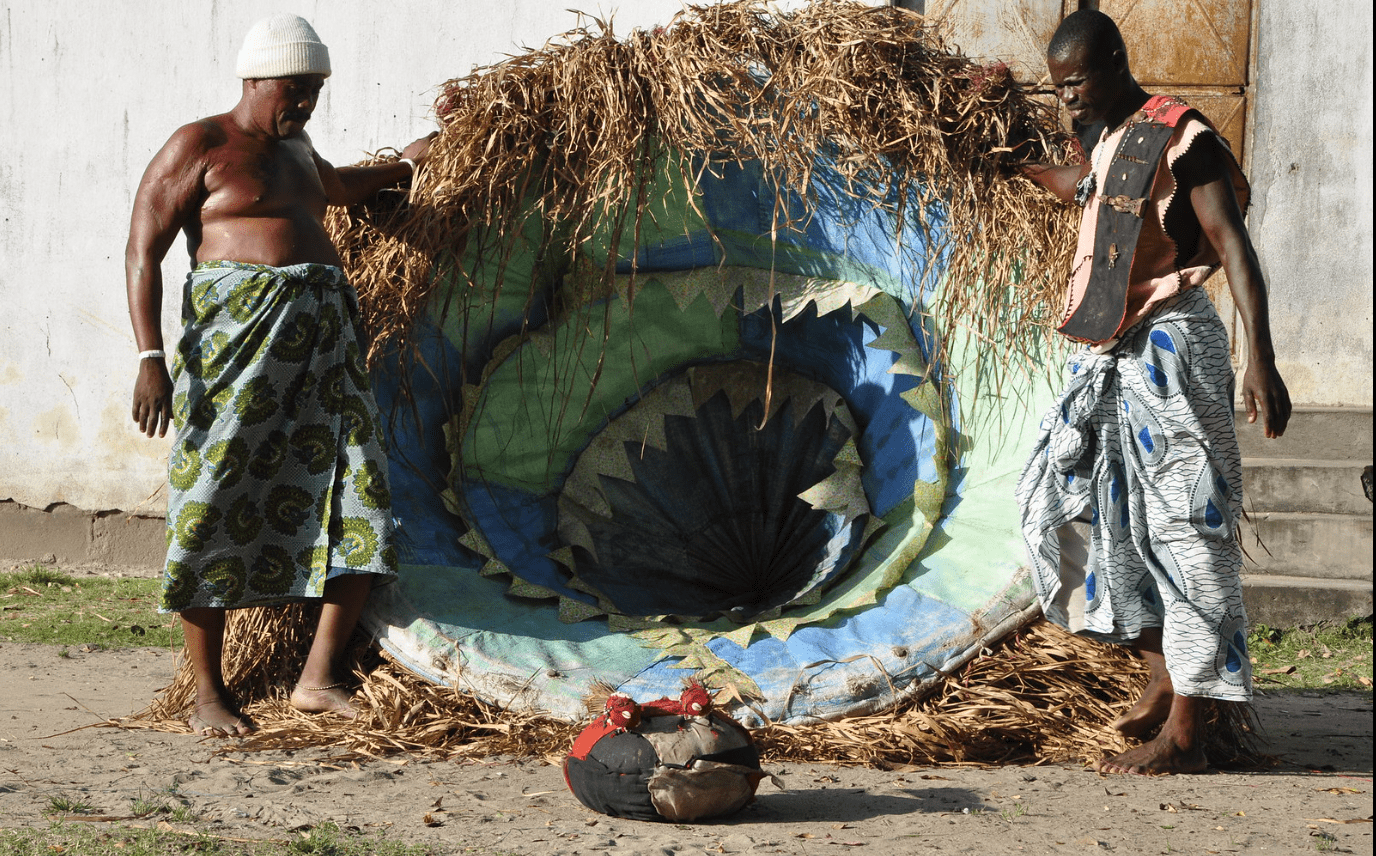Story of African Zangbeto Dance: Unique Tradition or Witchcraft?
The empty object in the above picture can talk, dance, or even walk on water without arms or face. Shocking! Right? Well, this is the African Zangbeto Dance which is very popular in the Ogu/ Voodoo culture of Africa. The man seen in the picture is a mediator who can communicate with both the spirit inside the Zangbeto and the people of the community.
Whenever we hear the word “Voodoo”, we generally associate it with witchcraft, but it is a religion followed by almost 30 lakh people in West African countries especially in Ghana, Nigeria, and Benin.
“Voodoo is one of the oldest religious practices. It got negative publicity because of the colonizers who were scared of their African slaves practicing Voodoo. Though some Voodoo practices can be harmful, it is generally practiced for the betterment of the community by worshipping the ancestors” – said a Voodoo practitioner.
Some of the Voodoo practices are also reflected in many popular movies like The Black Panther of Avengers and the Pirates of the Caribbean which have done great at the box office.
You must be confused, why am I talking about Voodoo, when this blog is actually about the African Zangbeto? Well, that is because without Voodoo there is no Zangbeto.
“Zangbeto” literally means “night watchman” or the “men of the night”. They are known to be the primary police force of the Voodoo community, who not only guard them at night but also maintain law and order. These Zangbetos may appear as mere conical structures made of colorful threads but can do wonders when possessed by the spirits of the ancestors.
Thus, the African Zangbetos are supernatural-possessed beings valued as gods by many and the African magic dance performed by these Zangbetos guarantees the protection of the village against evil spirits and malicious people. The African Zangbeta Dance mostly consists of spinning movements which symbolizes the cleansing of the village.
To know more about the African Zangbeto Dance, let’s first go back to the origins and know the story of the African Zangbeto Dance.
Other Stories From The World: Chimi Lhakhang: Most Visited Temple Of Fertility In Bhutan
Story of African Zangbeto Dance
The origin of the African Zangbeto Dance can be traced back to the coastal beaches of Ghana, Togo, and Benin. Primarily, the African Zangbeto was supposed to protect these coastal towns from raids and attacks, as it was a very strategic location back then. The African Zangbeto Dance would scare and drive away all the evil spirits or raiders with its dancing moments.
The Story of African Zangbeto Dance suggests that it emerged out of necessity as a traditional military organization responsible for defending these coastal towns from all the external/ internal forces. Apart from acting as a protector, the African Zangbeto was also an arm of the traditional ruling institution that maintained law and order in the region.
But, in today’s times, the African Zangbeto Dance can only be seen during major Zangbeto festivals across the country.
But, this story of African Zangbeto Dance does not specify what’s inside this structure. Well, these structures are empty!
If it’s empty, how does it do all the police work and the dancing? According to the followers of Voodoo culture, this African Voodoo dance performed by the Zangbetos is actually done by the spirits of “night watchmen” who make them do all the work.
Does that mean that spirits exist? There are several forms of African Voodoo dance and the African Zangbeto dance is just one of them. This African Magic Dance is beyond human understanding and defies science.
Now that we have learned about the origins and the story of African Zangbeto Dance, let’s learn more about these unusual dancing structures.
Other Stories From The World: The Untold Story Of Aokigahara: Suicide Forest Of Japan
Structure and Features African Zangbeto
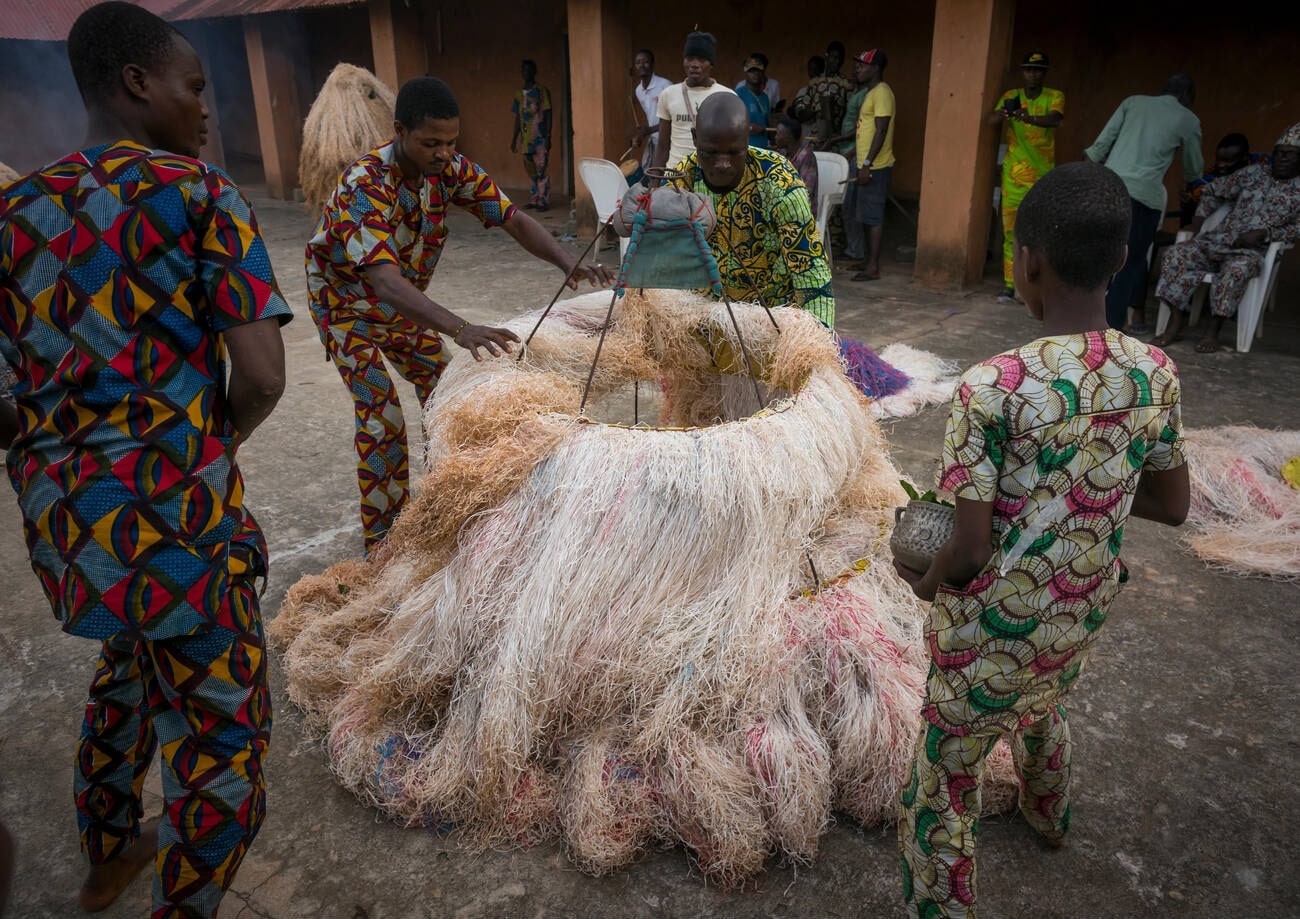
The name of the Zangbeto costume comes from “Zan” meaning night and “Gbeto” which means hunter. Thus, Zangbeto is “the house of night hunter” that appears like a moving house during the dance. This holy costume is made from threads of palm leaves, hay, raffia, etc. These threads are then attached to the hollow bamboo structure which is shaped like an inverted cone.
During the African Zangbeto Dance, this holy costume is worn/ inhabited by the spirits of the night. Sometimes, the spirit also demands a costume to be made of bamboo and banana threads, which signifies a bad omen or an angry spirit. If a spirit dressed in this costume and performed the African magic dance, then it symbolizes destruction and creates the impression of darkness as per the Voodoo culture.
Features of African Zangbeto
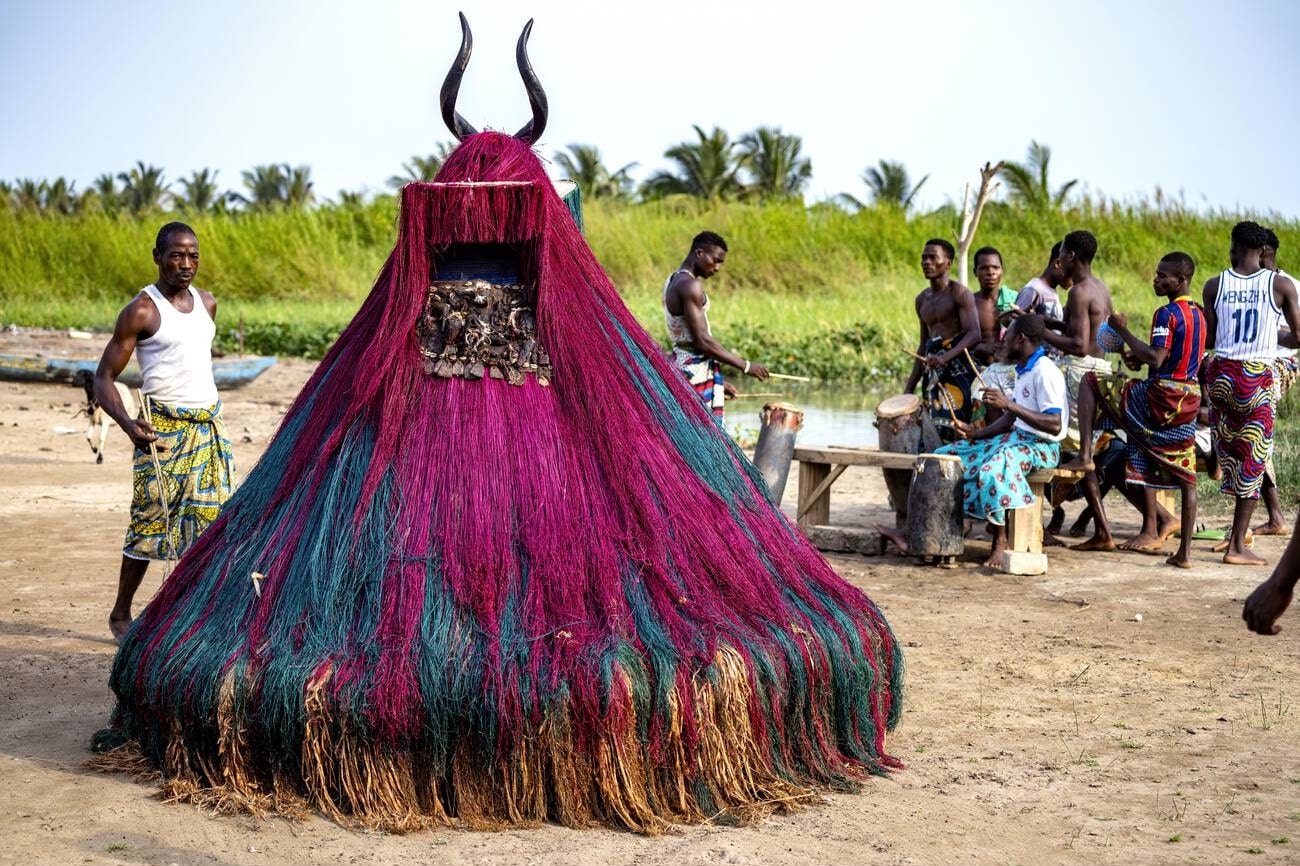
Apart from the main inverted cone-like structure, there are several other features of an African Zangbeto that add more charm to the Zangbeto costume. The features are as follows:
- Colorful threads – The Zangbeto costume is decorated with colorful threads which are dyed using special herbs available naturally. These colors are highly symbolic and add an element of beauty to the African Zangbeto Dance. The colors signify various aspects of life like red – strength, green – fertility, yellow – progress, purple – pain, brown – sacrifice, and the blend of all signifies maturity.
- Attachments – The Adrican Zangbeto costumes are sometimes attached with several attachments depending on the purpose/ occasion. Normal decorative items include braids, horns, pearls, decorative jewelry, headgear, scarves, etc. When the Zangbeto wants to communicate with the people of the community then a decorative mask is attached on top which appears to the face.
- Gender – One of the most interesting features of an African Zangbeto or as we can say “the spirit of night” is that it is often portrayed to be gender neutral. The Voodoo community believes that human strength does not reside in males or females, but a harmonious co-existence of both can do wonders. As you read further you will know how some Zangbetos also give birth to smaller Zangbetos and also have warrior-like spirits. The gender of African Zangbeto is very mysterious as it works both as male and female. Thus, it is a common belief that these “ancestral spirits” are gender-neutral.
Other Stories From The World: 3 Balinese Ghost Stories – Unfolding The Spooky Side Of Bali Culture
Types of African Zangbeto
The African Zangbeto is classified into 4 types based on their appearance as follows:
1. Zaholu
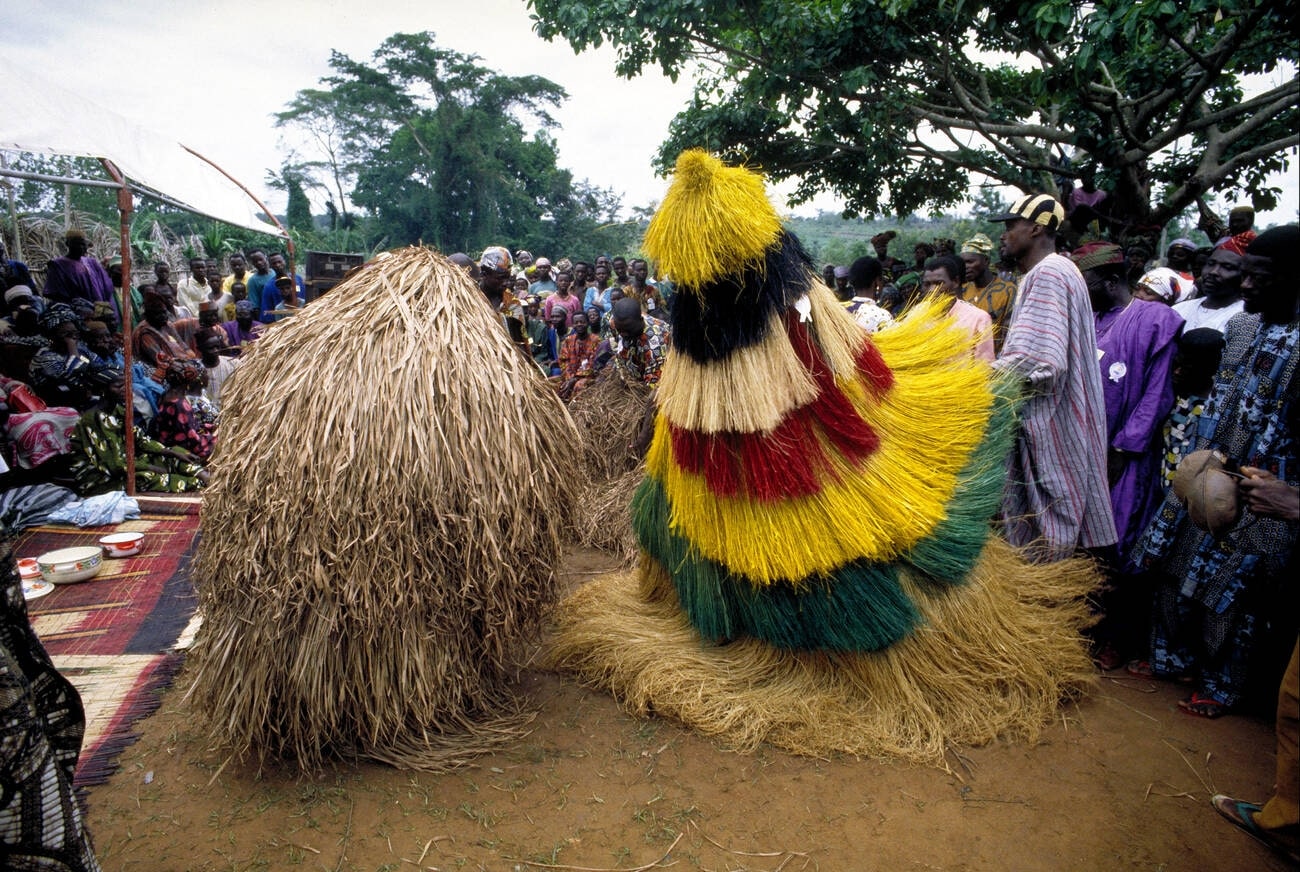
The head/ king of the African Zangbetos is called Zaholu. They are generally bigger and taller in size amongst others. The Zaholu appears once in 3 years during the major Zangbeto festivals. It is believed that the spirit of Zaholu resides in the deep ocean away from the reach of an ordinary mortal.
As Zaholu emerges from the sea, it is generally spotted in the coastal areas or riverbanks during midnight around the festival time. Zaholu disappears from the public 3 days before it appears again in front of the public during festivals.
2. Ataho
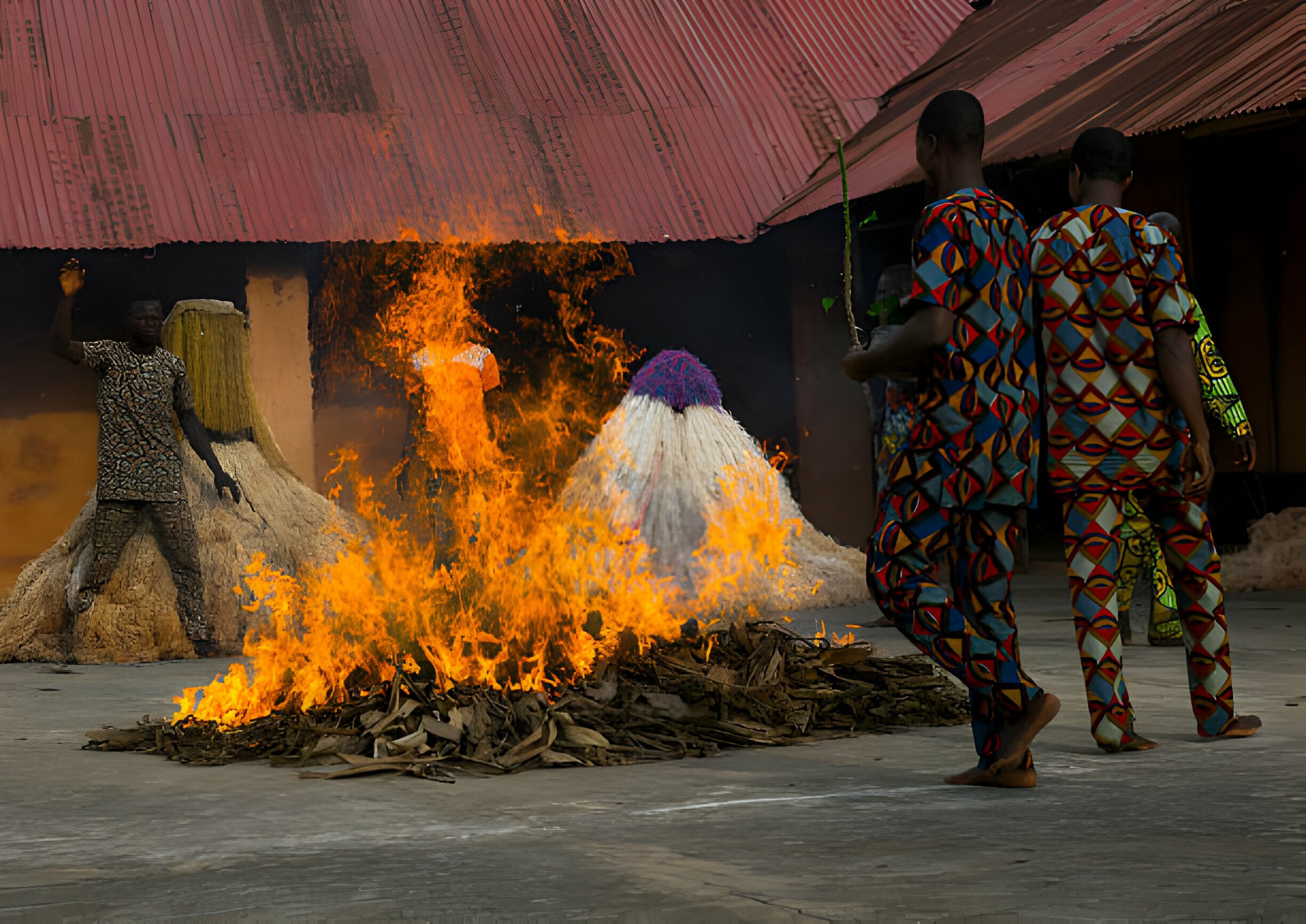
The Spirit of Ataho is one of the most popular and commonly seen in the Zangbeto festival. The African Zangbeto Dance by Ataho is a delight to watch. They are known for having good dancing abilities and some unique magic tricks that they perform during the dance.
One of the most popular magic tricks of Ataho is even if you burn the Zangbeto costume possessed by the spirit of Ataho, it will continue dancing until it burns down completely and turns into ash. If another Zangbeto costume is placed above the ash it will immediately turn into a living Zangbeto and continue dancing with its graceful movements.
Another magic trick involves giving birth to a smaller Zangbeto. Mind-blowing, Isn’t it? This act of giving birth represents the blessing of the ancestors that they give to the land to increase productivity. The birth of the smaller Zangbeto means that the ancestors themselves have come down to earth to bless the people.
3. Oho Yin-Yin Ataho
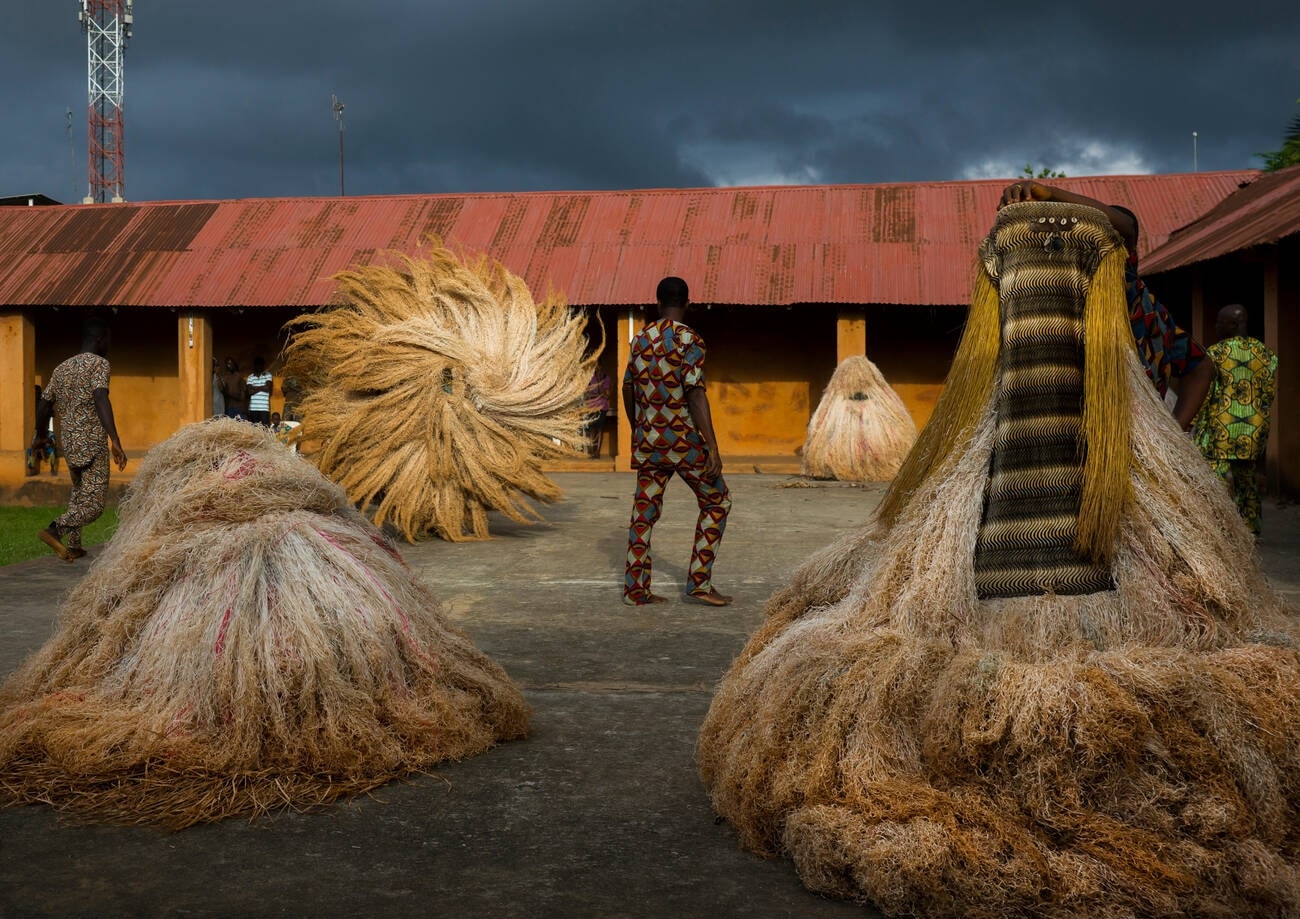
The Oho Yin-Yin Ataho is less complex when it comes to the costume, but when this spirit performs the African Zangbeto Dance it shows some remarkable dance moves. They are more agile, quick and very acrobatic while dancing.
The Oho Yin-Yin Ataho symbolizes youth because of its quickness, agility, and lack of complications. This spirit not only possesses strength, agility, and power but can also transfer these qualities to the community.
4. Ohosi
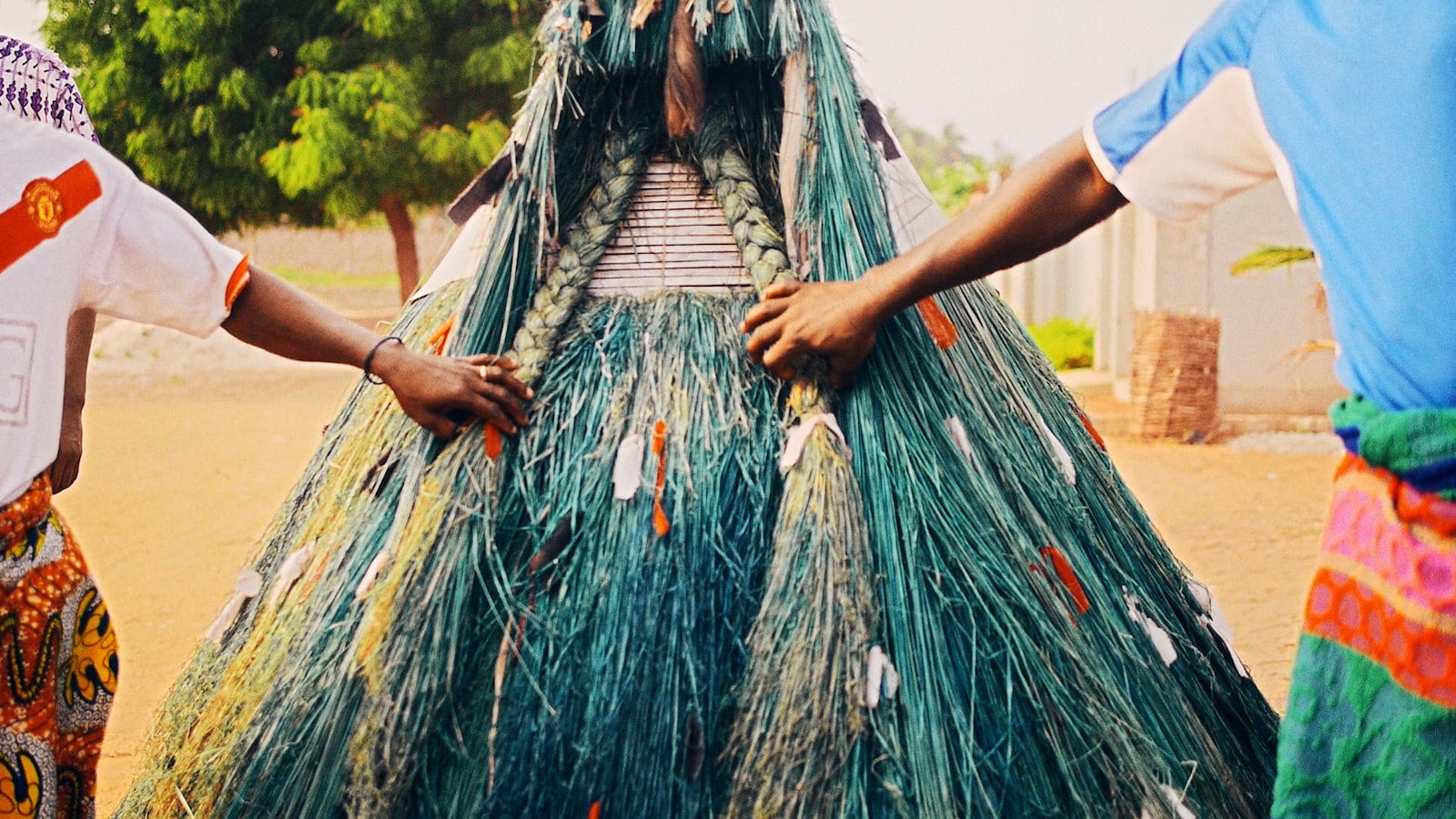
The spirit of Ohosi is also called “GOAT” as this African Zangbeto is one of the most difficult to handle. This spirit has the qualities of a warrior, is ungovernable, and has stubborn behavior. The Ohosi spirit is a symbol of strength, bravery, and resilience. The costume worm by Ohosi during the African Zangbeto Dance has braids and small jewelry attached to it.
In cultural terms, the names ending with “Si” are generally feminine. Despite all the warrior-like masculine qualities, the name of this Zangbeto spirit is feminine, and also wears braids like that of a female. These feminine and masculine qualities prove that the spirits are gender-neutral.
How Does The African Zangbeto Help The Community Today?
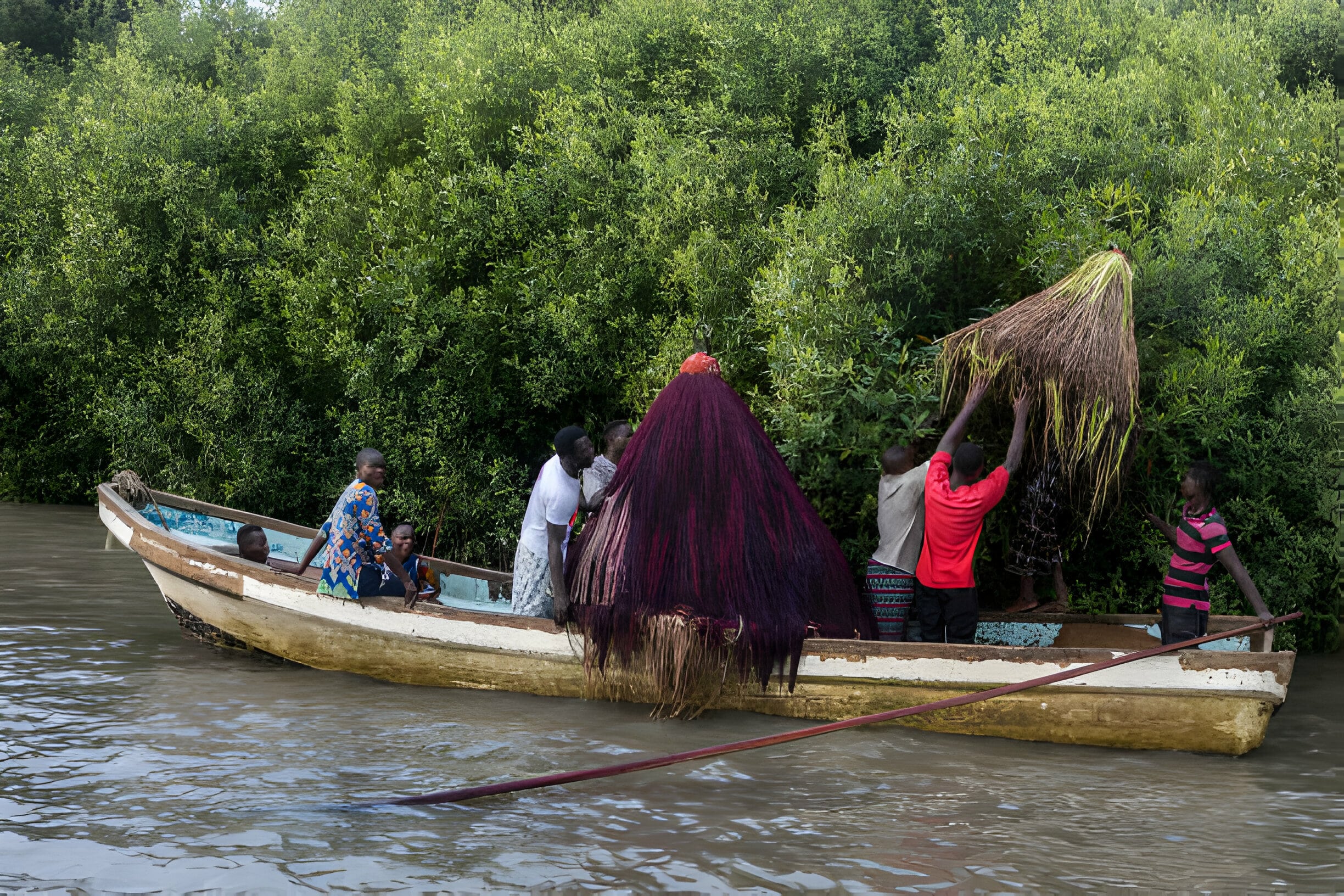
The story of African Zangbeto Dance is beyond the understanding of human beings. Their primary function is to protect their community and establish law and order within. But, you will be surprised to know that these ancestral spirits inside the Zangbeto also work for the betterment of the community.
A few years ago, the mangroves along the coasts of Benin had shrunk massively due to excessive and illegal fishing activities. In the following Zangbeto festivals, the deity/ spirit of the ancestors spoke in the form of Zangbeto and stated that “No one will cut/cause any harm to the mangroves. If anyone found guilty, they will be punished and face the wrath of the deity. They will also be charged a fine of 1,20,000 Franc”.
After listening to the deity, several small versions of the African Zangbeto were installed on the edges of the mangroves by the locals. This actually worked and there was significant growth in the mangrove forest area.
Conclusion
The African Zangbeto and the rituals of the Voodoo Community are beyond human understanding. But they have been serving the community and thriving for their betterment for centuries now. It would be wrong to associate these religious practices with negative publicity as they have also done some good work of protecting the people from external raids and increasing the mangrove cover along the coast.
As far as the African Zangbeto Dance is concerned, there are several places on Earth that defy science and are beyond human understanding and this is just one of them. It is astonishing how spirits can do wonders and make an empty object dance.
Witnessing this extraordinary act has now been added to my bucket list as it has generated immense curiosity in my mind, regarding the Voodoo culture. So, when are you planning to go and witness the African Zangbeto Dance?
What is the African Zangbeto Dance?
Zangbeto Dance in Africa is a dance performed by the “spirit of the night watchmen”. The spirits wear/possess the Zangbeto costume to perform this dance during the Zangbeto festival. The dance generally has spinning movements which signifies the cleansing of the evil spirits in the village.
What is the significance of the Zangbeto Dance in African culture?
The Zangbeto Dance in the African culture signifies the protection of the village against evil spirits and malicious people. Apart from being the protector, the spirits also perform dance and magic tricks to maintain the law and order in the region.
How is the African Zangbeto Dance performed?
The African Zangbeto Dance dance is performed by the “spirits of night watchmen” or “guardians of the night”. These spirits wear the Zangbeto costume and dance with spinning and acrobatic moments during the Zangbeto festivals.
Where can one witness the African Zangbeto Dance?
One can witness the African Zangbeto Dance in countries like Benin, Togo, Nigeria, Ghana, etc, especially along the coastal regions. These dances take place during the Zangbeto festivals, special occasions or other festivals celebrated in the region.



